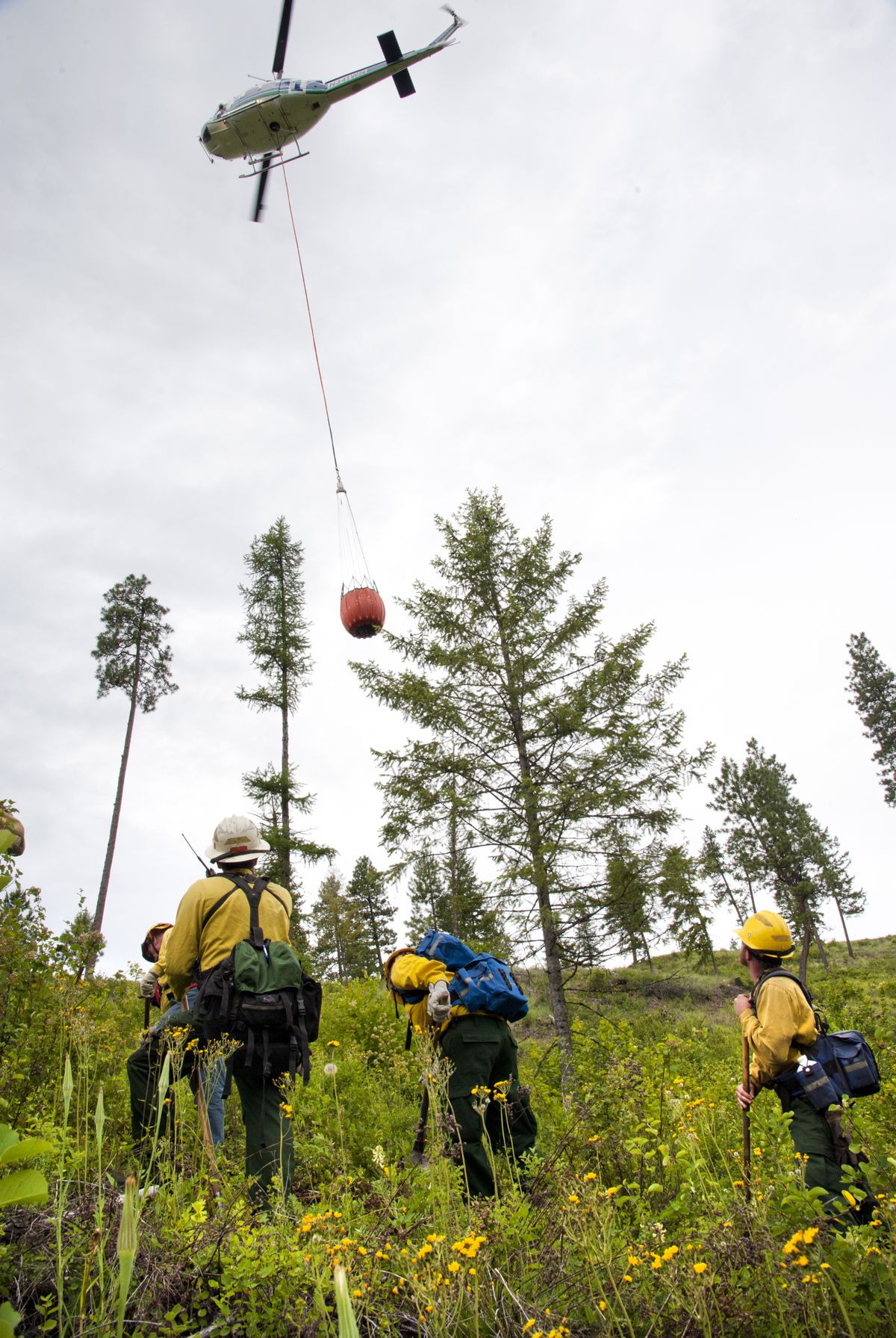Helicopter crews, firefighters practice their skills near Colville

COLVILLE – Fast-strike helicopter fire crews got a chance to hone their skills Wednesday just in time for wildfire season in the Inland Northwest.
The Washington Department of Natural Resources brought about 50 state and county firefighters together northwest of Colville this week for simulated fire training.
The DNR’s elite Helitack operation was the focus of the effort, but regular firefighters were also trained working with overhead water dumps from the Huey U1-H1 aircraft.
With temperatures predicted to reach the upper 90s in the next few days, it won’t be long until the forest turns tinder dry despite the heavy June rains.
Last year’s severe wildfires in central Washington have firefighters and their supervisors eager to be ready.
“It’s coming. It’ll break out,” said Anton Damm, aviation program manager for DNR, about the prospects that his crews will soon be fighting the real thing.
“It’s just how bad and when.”
During the season, DNR operates five helicopter teams from an inventory of seven Huey aircraft. One of those crews is normally based in Colville during the summer.
It is the first time in recent years that the training was brought to northeast Washington.
“It’s hard to learn unless you do it,” Damm said.
Officials chose a clearing off Pingston Creek Road for their helicopter field base.
A mock fire scene was set up on a mountainside near a small lake about 2 miles away.
Training included crew transports, cargo missions and water bucket drops, all by air. Heavy water buckets tethered by a retractable line became counterbalances to the lift of the rotors. The pilots moved the swinging buckets in rhythm with their aircraft, but when they got close to the dump site, they controlled the motion below for precision drops either along a straight line or in a single spot.
This was clearly a veteran group of pilots at work in the three Hueys being flown Wednesday. Damm said his veteran crew of nine pilots includes several who flew in Vietnam.
During the past decade, DNR’s aviation teams have responded to an average of 125 incidents a year. The average flying time was 627 hours annually.
“It takes lots of specialized training so you don’t get anyone hurt,” said Capt. Vince Speziale of Spokane County Fire Protection District 4 based in Chattaroy.
Fire planning includes contingencies for injuries and part of the training exercise.
Speziale was with a District 4 crew updating their skills working with DNR helicopters. The aircraft have become an important tool in protecting homes endangered by wildfire, he said.
The advantage is speed. Helitack teams can get to a fire in a matter of hours, maybe less, to begin dropping water while waiting for their extra equipment and fuel trucks to arrive by road. Bucket cables include hoses that inject retardant foam into the water to enhance its effectiveness.
The crews move around the state to locations where fires are most likely to occur based on weather, and they can remain away from home for 14 days at a time.
“They are so mobile you can put them where you need them,” Damm said.
Callan Wilkins, a helicopter manager trainee and a squad boss, said the operations are carefully controlled from the ground at the field base.
Parts of this week’s training included base operations, refueling and basics of fire investigation.
Damm said demand has grown in recent years for experienced helicopter pilots, in part because of a boom in mining and oil work.
“I’ve had to fend off people trying to steal my pilots,” he said.